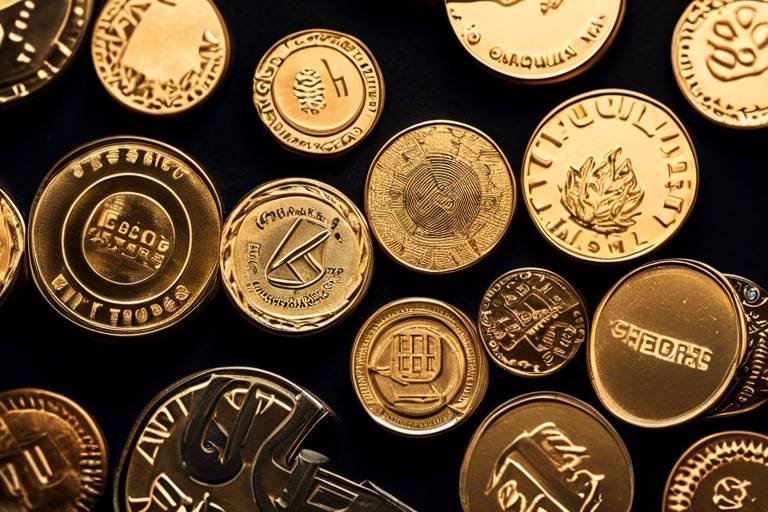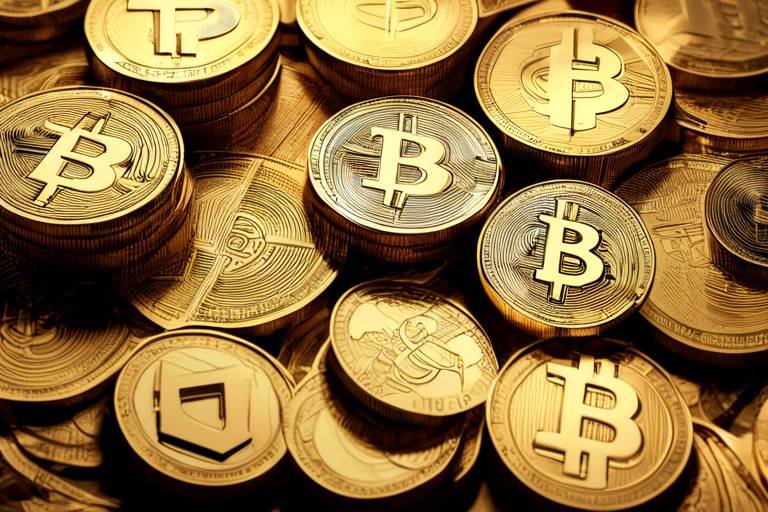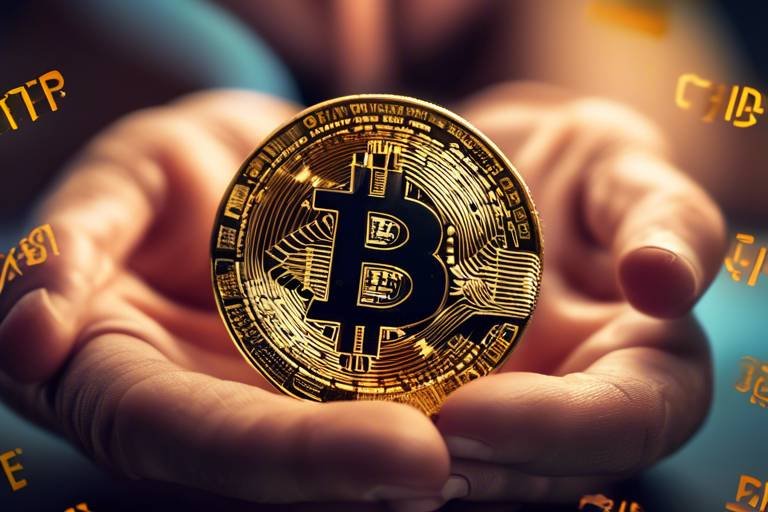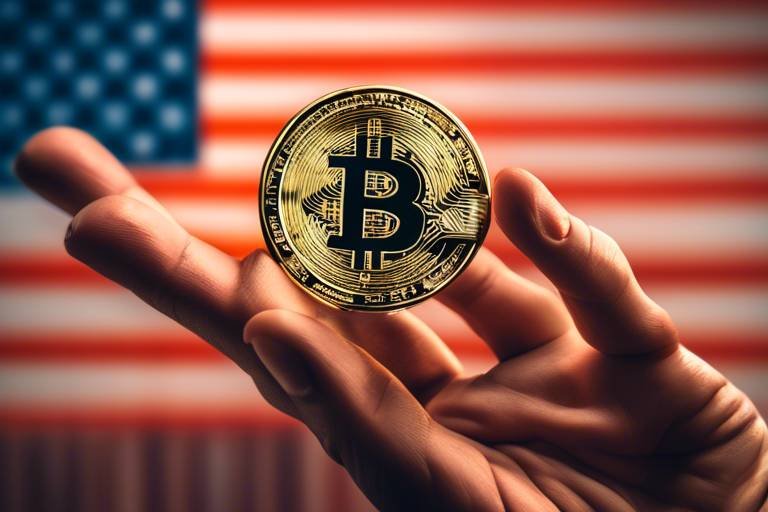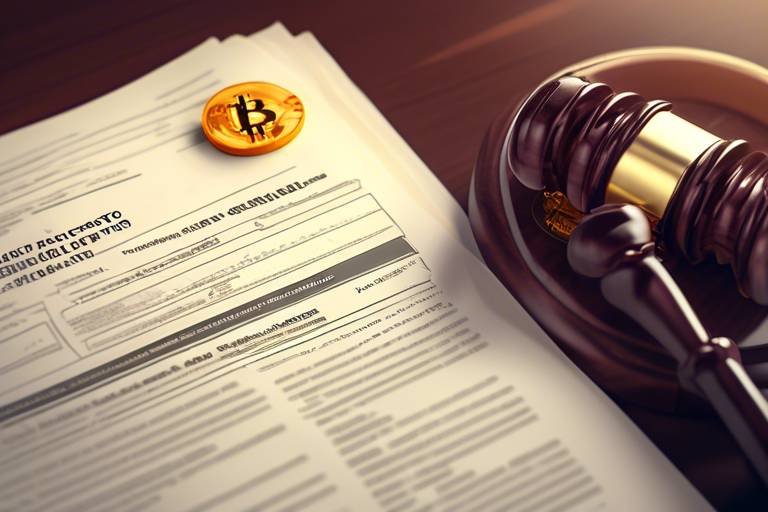Evaluating the Performance of Utility Tokens in the Market
In the ever-evolving landscape of digital assets, utility tokens have emerged as a fascinating component of the cryptocurrency ecosystem. These tokens are not just digital currencies; they serve specific purposes within their respective blockchain platforms. As we dive into the performance of utility tokens, it's essential to understand their unique attributes, market dynamics, and the various factors that influence their value.
Utility tokens are designed to provide users with access to a product or service within a blockchain ecosystem. Unlike traditional cryptocurrencies, which primarily function as a medium of exchange, utility tokens often grant holders specific rights or privileges within a platform. For instance, a utility token might allow users to pay for transaction fees, access premium features, or participate in governance decisions. This inherent functionality is what sets utility tokens apart and drives their demand.
Characteristics of utility tokens include:
- Functionality: They serve a specific purpose within a decentralized application (dApp).
- Access: Holders can access services or products that are exclusive to token users.
- Tradability: Many utility tokens can be traded on various exchanges, providing liquidity.
The performance of utility tokens is heavily influenced by market trends. Recent data indicates a surge in investor interest, driven by the increasing adoption of blockchain technology across various sectors. As more companies explore the potential of decentralized solutions, the demand for utility tokens is expected to grow.
Examining market behavior reveals several key trends:
- Increased Institutional Investment: More institutional players are entering the crypto space, boosting confidence in utility tokens.
- Growing Use Cases: Innovative applications of utility tokens are emerging, from gaming to supply chain management.
- Market Volatility: While the potential for high returns exists, utility tokens often experience significant price fluctuations, which can deter some investors.
A historical performance analysis provides valuable insights into how utility tokens have fared over time. By reviewing past market cycles, we can identify patterns that may help predict future performance. For instance, during the 2017 crypto boom, many utility tokens saw explosive growth, only to be met with sharp corrections. This cyclical behavior highlights the importance of external factors, such as regulatory news and technological advancements, in shaping token valuations.
To understand what drives success in the utility token space, let's look at a few case studies:
| Token Name | Use Case | Market Strategy |
|---|---|---|
| Chainlink (LINK) | Decentralized oracles for smart contracts | Partnerships with major blockchain projects |
| Basic Attention Token (BAT) | Advertising and user attention rewards | Integration with the Brave browser |
By analyzing these examples, we can identify key factors contributing to their success, such as innovative use cases, strong community support, and strategic partnerships.
Despite their potential, utility tokens face numerous challenges. Regulatory scrutiny is one of the most pressing issues, as governments around the world grapple with how to classify and regulate these digital assets. Additionally, market volatility can create uncertainty, leading to fluctuating investor confidence. Understanding these challenges is crucial for anyone looking to invest in utility tokens.
Investor sentiment plays a crucial role in the performance of utility tokens. Market psychology can drive buying and selling decisions, often leading to price swings that don't necessarily reflect the underlying value of the token. For example, positive news can lead to a surge in demand, while negative news can trigger panic selling. This volatility underscores the importance of keeping a pulse on market sentiment when evaluating utility tokens.
The regulatory landscape significantly affects the utility token market. Current regulations vary widely from one jurisdiction to another, impacting how tokens are issued and traded. Understanding these regulations is essential for both token issuers and investors, as compliance can enhance trust and promote market integrity.
Different countries approach the regulation of utility tokens in various ways. For instance, while some nations have embraced cryptocurrencies with open arms, others have imposed strict restrictions. This disparity can create challenges for token projects looking to operate globally. It's important for investors to stay informed about regulatory developments in their regions, as these changes can have significant implications for token performance.
To ensure long-term success, compliance with regulations is vital for utility tokens. Best practices for token issuers include conducting thorough legal reviews, maintaining transparency with investors, and adhering to anti-money laundering (AML) and know your customer (KYC) regulations. By following these guidelines, token projects can foster trust and build a solid foundation for growth.
What are utility tokens?
Utility tokens are digital assets that provide users with access to a product or service within a blockchain ecosystem.
How do utility tokens differ from cryptocurrencies?
While cryptocurrencies are primarily used as a medium of exchange, utility tokens serve specific functions within their respective platforms.
What factors influence the value of utility tokens?
The value of utility tokens can be influenced by market demand, investor sentiment, regulatory developments, and the overall growth of blockchain technology.
Are utility tokens a good investment?
Like any investment, utility tokens come with risks. It's essential to conduct thorough research and consider market trends before investing.

Understanding Utility Tokens
Utility tokens are a fascinating aspect of the cryptocurrency ecosystem, designed to provide users with access to specific services or functionalities within a blockchain platform. Unlike cryptocurrencies such as Bitcoin or Ethereum, which primarily function as a medium of exchange or a store of value, utility tokens serve a more specialized purpose. Think of them as the keys to a digital kingdom; without these keys, you can't unlock the doors to the services offered within that ecosystem.
One of the defining characteristics of utility tokens is their ability to facilitate transactions within a decentralized network. For instance, if you want to use a decentralized application (dApp), you often need to purchase its utility token to gain access. This creates a direct link between the token and the service it represents. In many ways, utility tokens act like vouchers or tickets that grant users the right to access specific features or benefits. This model not only incentivizes users to engage with the platform but also helps to create a vibrant economy around the token.
Moreover, utility tokens can be categorized based on their functionalities. Some common types include:
- Access Tokens: These tokens allow users to access a particular service, such as cloud storage or content streaming.
- Payment Tokens: These are used to pay for services within the ecosystem, often at discounted rates compared to traditional payment methods.
- Governance Tokens: Holders of these tokens often have voting rights regarding the platform's future developments and changes.
As the cryptocurrency market continues to evolve, the role of utility tokens is becoming increasingly vital. They not only empower users but also create a sense of community and shared purpose. However, it's important to note that the value of utility tokens is often tied to the success of the underlying project. If the project fails to gain traction or faces challenges, the token's value can plummet, leading to significant losses for investors.
Overall, understanding utility tokens is crucial for anyone looking to navigate the cryptocurrency landscape. Their unique characteristics and functionalities can offer both opportunities and risks, making them an essential part of the digital asset ecosystem. As you dive deeper into this world, keep in mind that the performance of utility tokens is influenced by various factors, including market trends, investor sentiment, and regulatory developments.
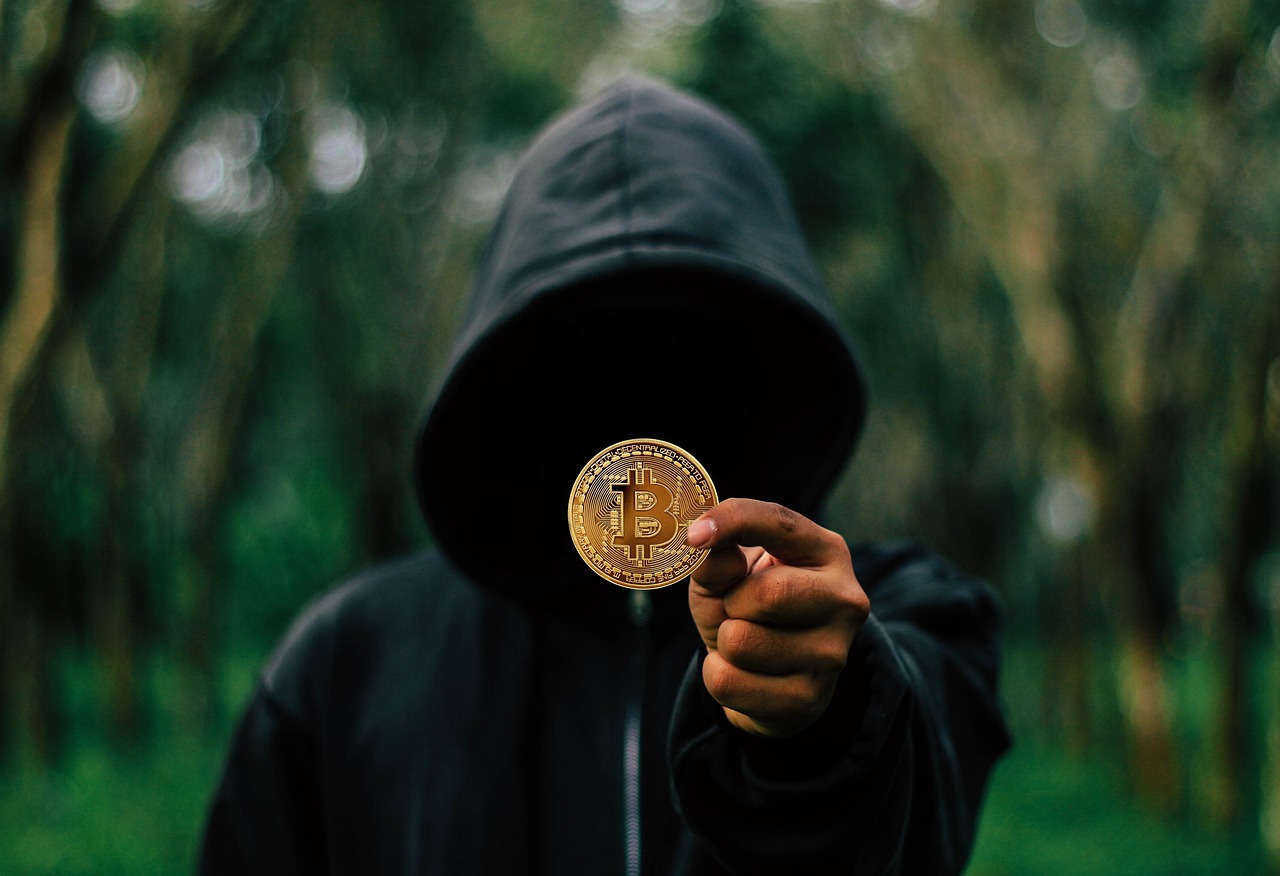
Market Trends for Utility Tokens
The landscape of utility tokens is continuously evolving, and staying updated with the latest market trends is crucial for investors and enthusiasts alike. Over the past few years, utility tokens have gained significant traction within the cryptocurrency space, primarily due to their unique functionalities and the growth of decentralized applications (dApps). As blockchain technology matures, we see these tokens becoming increasingly integral to various ecosystems, leading to a surge in their adoption and market performance.
One of the most notable trends is the rise of decentralized finance (DeFi). This movement has catalyzed the demand for utility tokens, as they often serve as the backbone for transactions and governance within DeFi platforms. For instance, tokens like Uniswap (UNI) and Aave (AAVE) have not only facilitated trading and lending but have also empowered users by giving them a voice in platform governance. The shift towards DeFi has created a vibrant market, where utility tokens are no longer just a means of exchange but also pivotal in shaping the future of financial services.
Moreover, the integration of utility tokens with non-fungible tokens (NFTs) has opened new avenues for growth. As NFTs gain popularity, many projects are leveraging utility tokens to enhance user engagement and incentivize participation. For example, platforms that allow users to create, buy, and sell NFTs often require utility tokens for transactions, thus creating a synergistic relationship that boosts the overall market for both asset types.
Another trend to consider is the increasing focus on regulatory compliance. As governments around the world begin to take a closer look at cryptocurrency markets, utility tokens are also under scrutiny. Projects that prioritize compliance with local regulations are likely to gain investor trust and, by extension, market stability. This shift towards transparency and adherence to legal standards is not just a trend but a necessity for long-term sustainability in the crypto space.
In terms of market behavior, we are also witnessing a growing interest from institutional investors. These investors are starting to recognize the potential of utility tokens, not just as speculative assets but as essential components of a diversified portfolio. This institutional interest can lead to increased liquidity and stability in the market, which is often a boon for retail investors as well.
To summarize, the market trends for utility tokens can be encapsulated in the following key points:
- Growth of decentralized finance (DeFi) and its impact on utility token demand.
- Integration of utility tokens with NFTs, enhancing user engagement.
- Increased emphasis on regulatory compliance for long-term success.
- Rising interest from institutional investors, contributing to market stability.
As we look ahead, it’s clear that the future of utility tokens is bright, but it will require adaptability and a keen understanding of these emerging trends. Investors and developers alike must remain vigilant and responsive to the changing dynamics of this exciting market.
1. What are utility tokens?
Utility tokens are digital assets designed to provide users with access to a product or service within a blockchain ecosystem. They are not intended as investments but rather as functional tools within their respective platforms.
2. How do utility tokens differ from security tokens?
While utility tokens provide access to services, security tokens represent ownership in an asset or company and are subject to regulatory scrutiny.
3. Why are utility tokens important in the DeFi space?
Utility tokens play a crucial role in DeFi by enabling transactions, governance, and incentivizing user participation within decentralized platforms.
4. How can I invest in utility tokens?
Investing in utility tokens typically involves purchasing them on cryptocurrency exchanges. However, it's essential to conduct thorough research and understand the specific use case and market dynamics of each token.

Historical Performance Analysis
When we look back at the historical performance of utility tokens, it’s like peering into a treasure chest filled with both glittering successes and cautionary tales. The journey of these digital assets has been anything but linear, with dramatic price swings that can leave even the most seasoned investors dizzy. To truly appreciate the evolution of utility tokens, we must analyze key market cycles, significant price movements, and the external factors that have influenced their valuations over time.
Utility tokens, which are designed to provide users with access to a product or service within a blockchain ecosystem, have experienced various phases of growth and decline. For instance, during the ICO boom of 2017, we saw a surge in interest and investment in utility tokens. Many projects launched with grand promises, leading to skyrocketing valuations. However, this bubble burst in early 2018, resulting in significant losses for many investors. The volatility experienced during this period was a stark reminder of the speculative nature of the cryptocurrency market.
To illustrate this volatility, consider the following table that outlines the price movements of several prominent utility tokens over the past five years:
| Token | 2018 Price (USD) | 2021 Price (USD) | 2023 Price (USD) |
|---|---|---|---|
| Ethereum (ETH) | $1,400 | $4,000 | $2,100 |
| Chainlink (LINK) | $0.50 | $20 | $7.50 |
| Binance Coin (BNB) | $6 | $600 | $300 |
This table highlights the remarkable fluctuations in the prices of utility tokens, showcasing not only their potential for growth but also the risks involved. The meteoric rise of tokens like Chainlink and Binance Coin demonstrates how innovation and strong use cases can propel a token's value, while the subsequent declines remind us that market sentiment can shift rapidly.
Moreover, external factors such as regulatory developments, technological advancements, and macroeconomic trends have played pivotal roles in shaping the historical performance of utility tokens. For example, the announcement of new regulations can lead to immediate market reactions, often resulting in price drops as investors reassess their positions. Similarly, technological upgrades or partnerships can spark renewed interest and investment, driving prices higher.
In conclusion, the historical performance of utility tokens is a testament to their dynamic nature. While they have the potential for substantial gains, they also come with inherent risks. Understanding these past trends is crucial for investors looking to navigate the often-turbulent waters of the cryptocurrency market. As we move forward, keeping an eye on the lessons learned from history will be essential in making informed decisions about utility tokens.
- What are utility tokens? Utility tokens are digital assets that provide users with access to a product or service within a blockchain ecosystem.
- Why do utility tokens experience high volatility? Their prices can be influenced by market sentiment, regulatory changes, and technological advancements, leading to rapid fluctuations.
- How can I assess the potential of a utility token? Consider factors such as the project's use case, the team behind it, market demand, and historical performance.

Case Studies of Successful Tokens
When we talk about utility tokens, some standout examples have truly revolutionized the way we think about digital assets. These tokens not only provide access to services within their respective ecosystems but also demonstrate how innovative use cases can lead to market success. One of the most notable examples is Chainlink (LINK). This decentralized oracle network allows smart contracts on various blockchains to securely connect to external data sources, APIs, and payment systems. Since its inception, Chainlink has seen a meteoric rise in its value, driven by the increasing demand for reliable data feeds in decentralized applications.
Another impressive case study is that of Binance Coin (BNB). Initially launched as a utility token for the Binance exchange, BNB has evolved into a multifaceted asset that powers various applications across the Binance ecosystem. Users can pay for trading fees at a discount, participate in token sales on Binance Launchpad, and even use BNB for transactions on Binance Smart Chain. The token's value has surged as Binance has expanded its offerings, showcasing the potential for utility tokens to grow alongside their platforms.
Moreover, let's not forget about Uniswap (UNI), which has become synonymous with decentralized finance (DeFi). As a governance token for the Uniswap protocol, UNI allows holders to participate in decision-making processes regarding the platform's future. The surge in DeFi popularity has propelled UNI's value, highlighting how utility tokens can benefit from broader market trends. These case studies underline a crucial point: the success of utility tokens often hinges on their ability to solve real-world problems and adapt to the evolving landscape of blockchain technology.
To further illustrate the success of these tokens, consider the following table that summarizes key aspects of each case study:
| Token | Launch Year | Primary Use Case | Market Impact |
|---|---|---|---|
| Chainlink (LINK) | 2017 | Decentralized Oracles | Significant increase in DeFi projects relying on reliable data |
| Binance Coin (BNB) | 2017 | Exchange Utility | Expanded use cases leading to increased adoption and value |
| Uniswap (UNI) | 2020 | Decentralized Exchange Governance | Surge in DeFi popularity boosting token valuation |
These examples not only showcase successful utility tokens but also provide valuable lessons for future projects. They highlight the importance of a clear use case, a strong community, and the ability to adapt to market changes. As we move forward, understanding these case studies can empower investors and developers alike to navigate the complex world of utility tokens with greater confidence.
- What are utility tokens? Utility tokens are digital assets that provide users with access to a product or service within a blockchain ecosystem.
- How do utility tokens differ from security tokens? Utility tokens are primarily used for accessing services, while security tokens represent ownership in an asset and may be subject to regulatory scrutiny.
- Can utility tokens be traded on exchanges? Yes, many utility tokens are traded on various cryptocurrency exchanges, allowing for liquidity and price discovery.
- What factors influence the value of utility tokens? Market demand, the underlying technology, regulatory environment, and overall sentiment in the cryptocurrency market can all impact the value of utility tokens.

Challenges Faced by Utility Tokens
In the ever-evolving world of cryptocurrency, utility tokens have emerged as a significant player, offering various functionalities within blockchain ecosystems. However, they are not without their challenges. Understanding these hurdles is crucial for investors and enthusiasts alike, as they can significantly influence the performance and viability of these digital assets.
One of the primary challenges faced by utility tokens is regulatory scrutiny. As governments around the world grapple with how to classify and regulate cryptocurrencies, utility tokens often find themselves in a gray area. This uncertainty can lead to sudden regulatory changes that impact token operations and investor confidence. For example, a utility token that was once deemed compliant might suddenly face restrictions, causing its value to plummet. Investors must stay vigilant and informed about the regulatory landscape to navigate these challenges effectively.
Another significant hurdle is market volatility. The cryptocurrency market is notorious for its price swings, and utility tokens are no exception. Factors such as market sentiment, technological advancements, and macroeconomic trends can cause rapid fluctuations in token prices. This volatility can deter potential investors who might be wary of entering a market where prices can change dramatically overnight. Additionally, the lack of a stable market can lead to a lack of trust among users and investors, further complicating the token's journey.
Furthermore, security concerns pose a considerable risk to utility tokens. With the rise of hacking incidents and security breaches in the cryptocurrency space, investors are increasingly cautious. If a utility token's platform is compromised, it can lead to a loss of funds and a tarnished reputation. This risk highlights the importance of robust security measures and transparency from token issuers to build trust and confidence within the community.
Moreover, market saturation is another challenge that utility tokens face. With thousands of tokens available, distinguishing between valuable projects and those that lack substance can be overwhelming for investors. The proliferation of tokens can dilute interest and investment in existing projects, making it difficult for utility tokens to gain traction. To stand out, token projects must demonstrate unique value propositions, innovative use cases, and effective marketing strategies.
Lastly, the lack of understanding among potential users can hinder the adoption of utility tokens. Many individuals may not fully grasp the functionalities or benefits of these tokens, leading to skepticism and reluctance to engage. Education and outreach are essential in bridging this knowledge gap, ensuring that users comprehend how utility tokens can enhance their experiences within blockchain ecosystems.
| Challenges | Description |
|---|---|
| Regulatory Scrutiny | Uncertainty in regulations can lead to sudden changes impacting token operations. |
| Market Volatility | Price swings can deter investors and create a lack of trust. |
| Security Concerns | Hacking incidents can lead to loss of funds and damage to reputation. |
| Market Saturation | Numerous tokens make it hard to identify valuable projects. |
| Lack of Understanding | Potential users may not grasp the benefits, hindering adoption. |
In conclusion, while utility tokens offer exciting opportunities within the blockchain landscape, they also face a myriad of challenges that can impact their success. Investors and developers must work together to address these issues, fostering a more stable and secure environment for utility tokens to thrive.
- What are utility tokens? Utility tokens are digital assets that provide users with access to a product or service within a blockchain ecosystem.
- Why are utility tokens important? They facilitate transactions and access to services, enhancing the functionality of blockchain platforms.
- What challenges do utility tokens face? Key challenges include regulatory scrutiny, market volatility, security concerns, market saturation, and a lack of user understanding.
- How can investors mitigate risks associated with utility tokens? Staying informed about regulations, understanding market trends, and conducting thorough research before investing can help mitigate risks.

Investor Sentiment and Utility Tokens
Investor sentiment is like the pulse of the cryptocurrency market, especially when it comes to utility tokens. These digital assets are not just currencies; they represent access to services and functionalities within a blockchain ecosystem. When investors are enthusiastic and optimistic about the future of these tokens, it can lead to a surge in demand, driving prices up. Conversely, when fear and uncertainty creep in, it can result in a rapid decline in value. So, how does this sentiment actually shape the market?
To understand the influence of investor sentiment on utility tokens, we must first consider the psychology of trading. Imagine you're at a bustling market, and the energy is contagious. If everyone around you is buying, it creates a sense of urgency and excitement. In the same way, when positive news emerges—like a partnership announcement or technological advancement—investors often rush to buy utility tokens, anticipating that their value will skyrocket. This phenomenon is known as the herd mentality.
However, it's not just positive news that can sway sentiment. Negative events, like regulatory crackdowns or security breaches, can turn the tide dramatically. Investors may panic and sell off their holdings, fearing further losses. This reaction can create a vicious cycle, where falling prices lead to more selling, thus exacerbating the decline. The volatility of utility tokens is a double-edged sword, offering opportunities for profit but also posing significant risks.
Another key factor in shaping investor sentiment is social media. Platforms like Twitter and Reddit have become hotspots for discussions about utility tokens. A single tweet from a prominent figure can send prices soaring or plummeting. This instantaneous spread of information (or misinformation) can create a whirlwind of reactions, influencing buying and selling decisions almost in real-time. It's essential for investors to navigate this landscape carefully, distinguishing between hype and reality.
Moreover, investor sentiment can also be influenced by broader market trends. For instance, during a bull market, utility tokens may experience heightened interest as investors look for the next big opportunity. In contrast, during a bear market, even the most promising tokens can suffer from a lack of interest. This ebb and flow of sentiment is crucial for understanding the overall health of the utility token market.
To sum it up, investor sentiment is a powerful force that can dictate the performance of utility tokens. Understanding the factors that influence this sentiment—such as market news, social media, and overall market conditions—can empower investors to make informed decisions. As we move forward in this ever-evolving landscape, keeping a finger on the pulse of investor sentiment will be vital for anyone looking to navigate the world of utility tokens successfully.
- What are utility tokens? Utility tokens are digital assets that provide users with access to a product or service within a blockchain ecosystem.
- How does investor sentiment affect utility tokens? Positive sentiment can drive demand and increase prices, while negative sentiment can lead to sell-offs and price declines.
- Why is social media important for utility tokens? Social media can amplify news and opinions, influencing investor behavior and market dynamics.
- What role does market volatility play? Volatility can create both opportunities and risks, making it essential for investors to stay informed and cautious.

Regulatory Impact on Utility Tokens
The world of utility tokens is not just a digital playground; it’s also a complex landscape shaped significantly by regulatory frameworks. These frameworks can either act as a protective shield for investors or a heavy burden that stifles innovation. Understanding the regulatory impact on utility tokens is crucial for anyone looking to navigate this dynamic market. Regulations can vary widely across different jurisdictions, creating a patchwork of rules that token issuers and investors must comply with. This inconsistency can lead to confusion and uncertainty, making it essential for participants to stay informed about the evolving legal landscape.
Currently, many governments are grappling with how to classify utility tokens. Are they simply digital assets, or do they fall under the category of securities? This classification has profound implications for how tokens can be marketed and sold. For instance, in the United States, the Securities and Exchange Commission (SEC) has been particularly vigilant in distinguishing between utility tokens and securities, often leading to legal battles that can affect the entire market. On the other hand, some countries have embraced a more welcoming approach, fostering an environment where utility tokens can thrive.
To illustrate the varying regulatory approaches, consider the following table that outlines how different countries treat utility tokens:
| Country | Regulatory Approach | Impact on Utility Tokens |
|---|---|---|
| United States | Strict, with significant scrutiny | Increased compliance costs and legal challenges |
| Switzerland | Progressive, with clear guidelines | Encourages innovation and attracts startups |
| Singapore | Balanced, supportive of blockchain technology | Boosts investor confidence and market growth |
| China | Restrictive, with bans on ICOs | Limits market participation and innovation |
As this table shows, the regulatory environment can either foster growth or create hurdles for utility tokens. For instance, in countries like Switzerland and Singapore, clear guidelines have led to a flourishing ecosystem for blockchain projects. In contrast, the stringent regulations in the United States and the outright bans in China can create an atmosphere of uncertainty, leading to decreased investor confidence. This disparity highlights the importance of understanding local laws and regulations when investing in or issuing utility tokens.
Furthermore, the regulatory impact extends beyond just compliance; it influences the overall market sentiment. Investors tend to gravitate towards markets that offer clarity and stability. When regulations are ambiguous or overly restrictive, it can lead to a decline in interest and investment in utility tokens. This is particularly evident during periods of regulatory crackdowns, where we often see a significant drop in token prices. In essence, the regulatory landscape acts as a double-edged sword, capable of either nurturing innovation or stifling it.
As we look to the future, it’s clear that the regulatory environment will continue to evolve. Governments worldwide are beginning to recognize the potential of blockchain technology and utility tokens, leading to discussions about creating more favorable regulations. However, the pace of these changes can be slow, and the outcome remains uncertain. For investors and issuers alike, staying abreast of these developments will be crucial for navigating the utility token market effectively.
- What are utility tokens? Utility tokens are digital assets designed to provide access to a product or service within a blockchain ecosystem.
- How do regulations affect utility tokens? Regulations can determine how utility tokens are classified, marketed, and sold, impacting their overall market performance.
- Why is investor sentiment important? Investor sentiment can significantly influence token prices and market stability, often swaying based on regulatory news.
- What should token issuers consider regarding regulations? Token issuers should stay informed about local laws and ensure compliance to foster trust and market integrity.

Global Regulatory Landscape
The for utility tokens is as intricate as a web spun by a master spider. Each country has its own set of rules and guidelines that shape how these digital assets operate, and navigating this terrain can be quite the challenge for investors and issuers alike. Understanding these regulations is crucial because they can either pave the way for innovation or throw a wrench in the works, stifling growth and creativity.
In the United States, for instance, the Securities and Exchange Commission (SEC) has taken a cautious approach, often classifying many utility tokens as securities. This classification means that such tokens must comply with stringent regulations, which can deter some projects from launching or expanding. On the other hand, countries like Switzerland have embraced a more progressive stance, creating a regulatory framework that encourages the development of blockchain technology while ensuring investor protection.
In Asia, the regulatory environment varies significantly. For example, Singapore has established clear guidelines that promote the growth of utility tokens and blockchain projects, making it an attractive destination for startups. Conversely, countries like China have imposed strict bans on initial coin offerings (ICOs) and have cracked down on cryptocurrency trading, creating a chilly atmosphere for utility tokens.
To illustrate the differences in regulatory approaches, here’s a brief overview of how some key regions handle utility tokens:
| Region | Regulatory Approach |
|---|---|
| United States | Strict, many tokens classified as securities |
| European Union | Developing a unified framework, varies by country |
| Singapore | Supportive, clear guidelines for utility tokens |
| China | Restrictive, bans on ICOs and trading |
| Switzerland | Progressive, encourages blockchain innovation |
As we can see, the contrast in regulations can be stark. This disparity not only affects how utility tokens are developed and marketed but also influences where investors choose to put their money. A supportive regulatory environment can lead to increased investor confidence and market stability, while a restrictive one can lead to uncertainty and hesitancy.
Moreover, the global nature of blockchain technology means that these regulations are constantly evolving. As governments and regulatory bodies continue to grapple with the complexities of digital assets, the landscape will likely shift, creating both challenges and opportunities for utility tokens. Staying informed about these changes is essential for anyone looking to invest in or develop utility tokens.
In conclusion, the global regulatory landscape for utility tokens is a dynamic and multifaceted environment. By understanding the various approaches taken by different countries, investors and issuers can better navigate the complexities of the market and make informed decisions that align with their goals.
- What are utility tokens? Utility tokens are digital assets that provide users with access to a product or service within a blockchain ecosystem.
- How do regulations affect utility tokens? Regulations can determine how utility tokens are classified and traded, impacting their market performance and investor confidence.
- Which countries have the most favorable regulations for utility tokens? Countries like Switzerland and Singapore are known for their supportive regulatory frameworks for utility tokens.
- What should investors consider regarding utility token regulations? Investors should stay informed about the regulatory environment in their region and globally, as changes can significantly impact token values and operations.
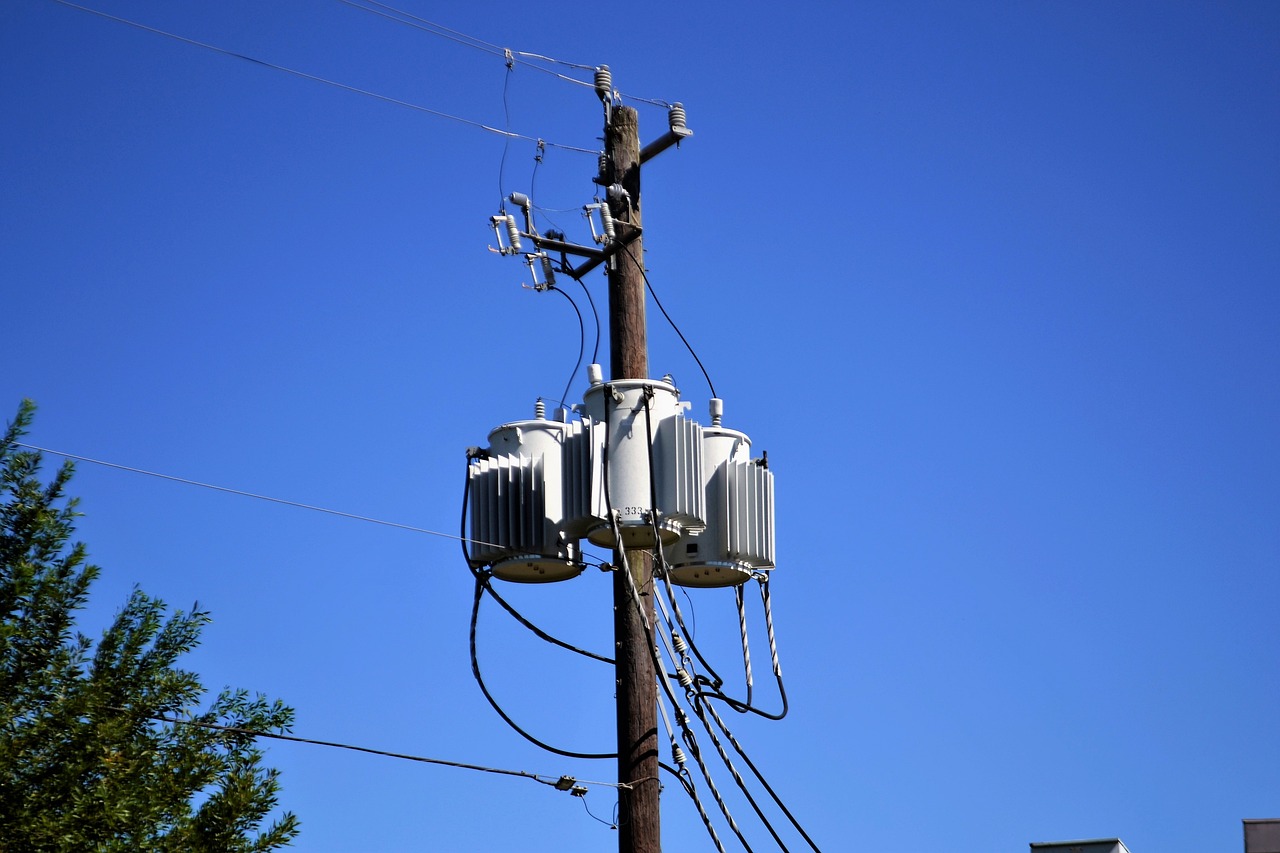
Compliance and Best Practices
In the ever-evolving landscape of utility tokens, compliance is not just a legal obligation; it’s a crucial pillar that supports the integrity and longevity of the market. As more investors flock to the world of cryptocurrencies, the importance of adhering to regulatory standards becomes increasingly clear. Utility tokens, which are designed to provide access to a product or service within a blockchain ecosystem, must navigate a complex web of regulations that vary from one jurisdiction to another. This makes it essential for both issuers and investors to be well-informed about compliance requirements.
For token issuers, establishing a robust compliance framework is paramount. This involves not only understanding the legal landscape but also implementing best practices that promote transparency and trust. Here are some key components of an effective compliance strategy:
- Know Your Customer (KYC): Implementing KYC procedures helps verify the identity of users, ensuring that the platform is not used for illicit activities.
- Anti-Money Laundering (AML): Adopting AML protocols protects the integrity of the token and aligns with global regulations.
- Regular Audits: Conducting periodic audits can help identify compliance gaps and enhance operational efficiency.
Moreover, staying updated with regulatory changes is vital. The regulatory environment surrounding utility tokens is dynamic, with authorities continuously refining their approaches. For instance, some regions may impose stricter rules, while others may offer more lenient frameworks. This shifting landscape requires token issuers to be agile, adapting their compliance strategies accordingly.
On the investor side, understanding the importance of compliance can significantly impact investment decisions. A compliant utility token is often viewed as a safer bet, as it indicates a commitment to legal standards and ethical practices. Investors should look for tokens that demonstrate transparency in their operations, including clear communication about their compliance measures.
Additionally, engaging with legal experts can provide invaluable insights into the compliance landscape. Legal counsel can help navigate the complexities of regulations, ensuring that both issuers and investors are aligned with the best practices in the industry.
In conclusion, compliance is not merely a checkbox for utility token projects; it’s a fundamental aspect that can dictate their success in the market. By prioritizing compliance and adopting best practices, both issuers and investors can foster a more secure and trustworthy environment for utility tokens. This not only enhances investor confidence but also contributes to the overall stability of the cryptocurrency market.
- What are utility tokens? Utility tokens are digital assets that provide users with access to a product or service within a blockchain ecosystem.
- Why is compliance important for utility tokens? Compliance ensures that utility tokens adhere to legal standards, promoting trust and stability in the market.
- What are some best practices for token issuers? Best practices include implementing KYC and AML procedures, conducting regular audits, and staying updated with regulatory changes.
- How can investors assess compliance in utility tokens? Investors should look for transparency in operations and engage with legal experts to understand the compliance landscape.
Frequently Asked Questions
- What are utility tokens?
Utility tokens are digital assets designed to provide users with access to a product or service within a blockchain ecosystem. They are not intended as investments but rather as a means to facilitate transactions and access functionalities on decentralized platforms.
- How do utility tokens differ from security tokens?
While utility tokens provide access to a service or platform, security tokens represent ownership in an asset or company and are subject to regulatory scrutiny. In essence, utility tokens are like tickets to a concert, while security tokens are akin to owning shares in a company.
- What factors influence the value of utility tokens?
The value of utility tokens can be influenced by several factors, including market demand, the utility provided by the token, investor sentiment, and regulatory developments. Just like the stock market, if more people want a token, its value tends to rise!
- What are some successful examples of utility tokens?
Successful utility tokens include Ethereum (ETH), which powers decentralized applications, and Binance Coin (BNB), used for transaction fees on the Binance exchange. These tokens have carved out significant niches in the crypto space, showcasing the potential for innovative use cases.
- What challenges do utility tokens face?
Utility tokens face challenges such as regulatory scrutiny, market volatility, and the need for continuous innovation to remain relevant. Just as a car needs regular maintenance to run smoothly, utility tokens must adapt to changing market conditions and regulations to thrive.
- How does investor sentiment impact utility tokens?
Investor sentiment can significantly affect the performance of utility tokens. Positive news can drive prices up, while negative news can lead to panic selling. It's a bit like a roller coaster ride—thrilling but unpredictable!
- What is the global regulatory landscape for utility tokens?
The global regulatory landscape for utility tokens varies widely, with some countries embracing them while others impose strict regulations. Understanding these differences is crucial for investors and issuers to navigate the complexities of the market.
- What are the best practices for compliance with regulations?
Best practices for compliance include conducting thorough due diligence, staying informed about regulatory changes, and ensuring transparent communication with users. Just like following traffic rules keeps everyone safe, adhering to regulations helps maintain market integrity.

